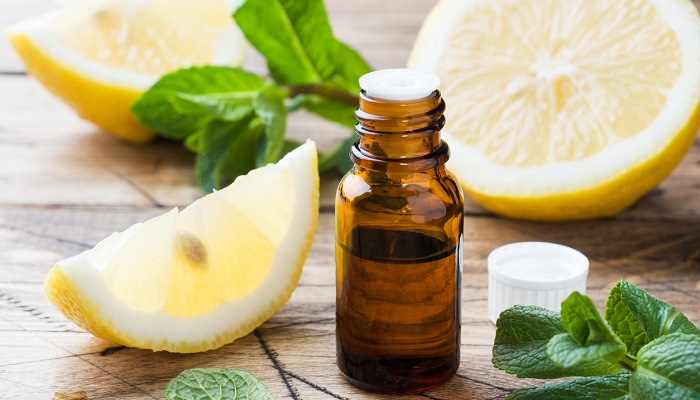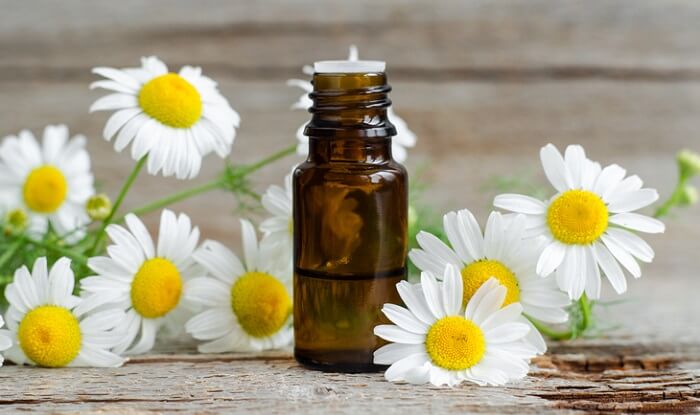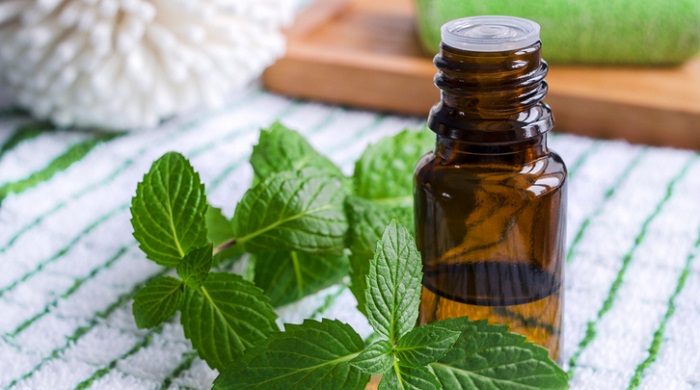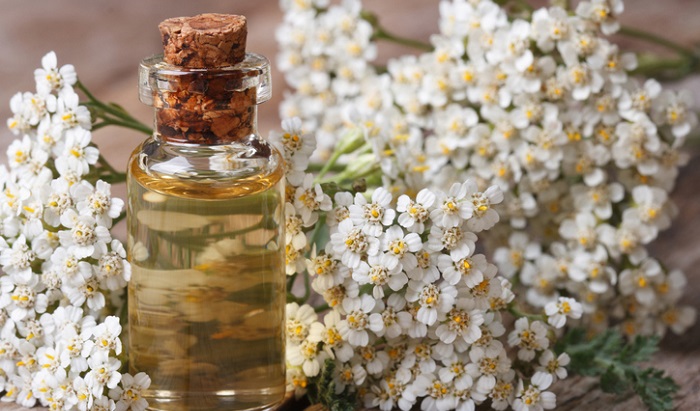Getting sick is part of life—but it’s still very inconvenient, all the same. One of the greatest discomforts of getting sick with the typical cough, cold, or flu is getting a fever.
A fever can cause many symptoms: not the least of which includes weakness, cold sweats, hot sweats, shivering, and uncomfortably high body temperatures that keep you from going to work or doing the things you enjoy.
Can home remedies like essential oils help with fever? Read on to learn more about the 7 best essential oils for fever, research that supports their effectiveness, how to use them at home for yourself and your loved ones, and more.
Causes and symptoms of fever
Fever is a natural body response to infection, even if it is an uncomfortable one.
Fever doesn’t just happen when you get cold or flu. Symptoms of fever are designed to isolate, expel, and destroy pathogens like bacteria or viruses that could cause chronic health problems.
Symptoms of fever include:
- Sweating (expels pathogens through the lymph glands, and then outside the body as sweat)
- Increased body temperature (to kill pathogens)
- Muscle aches and pains
- Fatigue and debility
- Flushed countenance
- Discomfort and irritability
- Chills or shivering
Some of the most common illnesses that lead to fever, or that are associated with fever, are:
- Severe infections of any kind (bacterial, viral, etc.)
- Respiratory infections (colds, flu, viruses, strep throat, pneumonia, bronchitis, sinus infections, tuberculosis, etc.)
- Stomach flu or infections (gastroenteritis, etc.)
- Urinary tract infections
- Bone infections
- Skin infections
- Meningitis (infection of outer brain)
- Appendicitis
- Cellulitis
Can essential oils help with fever?

Fever cannot really be “cured” by natural or conventional remedies, because it is a necessary function in the body. You can only support the body’s state of fever and help it along.
The term “breaking” a fever can be a little misleading. You’re not exactly getting rid of the fever. You’re only supporting the body while it is in this stage and finding relief for its symptoms. In a lot of cases too, when you’re “breaking” a fever, you’re not directly fighting the illness causing the fever… but you are helping the body fight it.
For hundreds (if not thousands) of years, the means of breaking a fever have been with the use of simple home remedies: ice packs, compresses, baths, and herbal remedies. In modern times and today, one of the most powerful ways you can deliver the health benefits of herbs—including herbs for fever—is through the use of essential oils.
In summary: yes, essential oils can help the body deal with fever. They can do this holistically by enhancing the body’s own innate ability to use fever for fighting infection.
Best essential oils for fever
For using each or any of these essential oils for fever and helping your body fight illness, take your oil (or oils) of choice, dilute them in a carrier oil, and apply to temples or pressure points around the body as needed. Reapply as often as desired until relief is experienced, or the fever is “broken.”
You can also use essential oils in diffuser or a humidifier for fever and symptom relief. Simply follow diffuser and essential oil product directions for proper use and stay in close proximity with the diffuser for the best results.
It is also recommended during the course of a fever or illness to consume these herbs in other forms, such as supplement, tea, or tincture form for best results during the course of your fever. Refer to product directions for use of these or consult with your health professional.
1. Chamomile

Chamomile flowers have been an enduring natural remedy for flu support over the centuries. There are two types of chamomile (Roman and German) with famously cooling and anti-inflammatory effects: the perfect match for supporting the body during its battle with fever.
Numerous studies and texts reference chamomile as a fever-fighter and reducer.1 It’s not 100% clear yet scientifically how this works, but the flower (and its essential oils) do appear to have a “cooling” effect, which could be due to its highly anti-inflammatory and antioxidant properties that appear to “cool things down,” including fever.
2. Cinnamon
Besides spicing up tea and food, cinnamon is a well-known natural fever reducer. Cinnamon has a noticeable “heating” effect (unlike chamomile, which has a cooling effect) which may seem counter-intuitive for fever support, but nonetheless has been popular for dealing with fevers over the centuries.2
It could be that, not unlike spicy foods (like cayenne pepper), cinnamon’s “warming” effects promote perspiration that ultimately lead to the “cool down” of a fever. While it hasn’t been closely studied in people, research on animals has shown that cinnamon may help lower the body’s temperature during fever.
3. Ginger
Much like cinnamon, ginger is another warming herb that can have a surprising cool-down effect for fevers… at least, according to many centuries of empirical evidence. Already a top choice for supporting colds, flu, coughs and sore throats, ginger (and ginger essential oil) can also handle the uncomfortable symptoms of flu with its anti-inflammatory properties.
Traditionally, ginger was used to promote perspiration to aid fever. However, research also shows it has antiviral and even antibacterial effects within the body that can help directly fight the infection at its source, too, during the course of the fever (that is, when ginger is taken internally—not when used as an essential oil).3
4. Mint

Besides freshening breath or soothing digestion, mint (both spearmint and peppermint, as well as many other types of mint plants in the genus Mentha) is a gentle fever supporter in its own right and has been used as such probably since the very beginning of herbalism.4 This may not be too surprising: mints of many kinds seem to have a very cooling effect on the body.
This cooling effect can be owed to menthol, the active phytochemical in all mints that also has an anti-inflammatory effect.
5. Lemon balm
While lemon balm is not a mint per se, it is in the mint plant family (Lamiaceae) and shares a lot of similarities with many of the other classic mints: including having a “cooling” effect and flavor at the same time. This is not because it contains menthol but because it contains other unique compounds to lemon balm that have a more “citrusy” taste.
There isn’t much research on lemon balm, fever, and how it works, but research does show that it can help fight viruses in the body.5 Among herbalists, lemon balm is placed alongside mint as a fever herb that could help gently cool the body down and promote relieving perspiration while ill.
6. Sage
Sage is considered one of the most powerful common herbal remedies for respiratory issues—even asthma. Some sources cite that it has also lent this power to fighting fevers throughout history. Even now, it is frequently turned to as a fever-supporting herb during many types of respiratory infection: colds, pneumonia, and more.6
Like many of the herbs and essential oils listed in this article, sage has potent antioxidants and anti-inflammatory properties that could explain its fever-reducing capabilities over the years.
7. Yarrow

A very stimulating herb, yarrow has some phytochemical similarities to sage and may work in the same way for fever. It is also known to be used for fevers traditionally.7
Yarrow has also been used throughout the centuries to support respiratory health and boost circulation—the latter effect believed to also help physiologically promote and support lymphatic movement and sweating, which is vital to an effective fever for fighting infection.
Essential oil blends for fever
When combined, essential oils can provide a wider range of benefits compared to a single oil. As such, the following blends can deliver the maximum benefit for fever relief.
Gentle fever blend
Use this blend for mild fevers or gentle fever support. Combine equal parts chamomile, lemon balm, and mint essential oils when using as a fever home remedy.
Follow the instructions for essential oil for fevers use in the previous section, “Best essential oils for fever.”
High fever blend*
When dealing with a high fever, use this blend. Combine equal parts cinnamon, sage, yarrow and ginger essential oils when using as a fever home remedy.
Follow the instructions for essential oils for fevers use in the previous section, “Best essential oils for fever.”
*Important: if you or a loved one are potentially dealing with a serious fever and infection, do not rely on essential oils only. If the fever reaches over 103°F and there are symptoms like headache, rash or extreme sluggishness, contact a health professional right away.
Are there other home remedies for fever?
Yes. Besides using herbs or essential oils, some of the best ways to support a fever are simple and can be done by just about anyone in the comfort of your own home. These include:
- Using a cold compress or wrap (on head, feet, etc.)
- Taking a lukewarm bath or shower
- Drinking plenty of fluids
- Drinking herbal teas
- Using a humidifier or diffuser
While fevers can be uncomfortable, they are no cause for alarm—unless they reach high temperatures and come with serious symptoms. When this happens, be sure to contact your doctor and don’t just rely on essential oils for fever at home.
 About Adrian White
About Adrian White
Adrian White is a certified herbalist, organic farmer, and health, food, and agriculture freelance writer—and upcoming author. She is a past contributor to Healthline with bylines in The Guardian, Civil Eats, and Good Housekeeping. Adrian is also the co-owner and operator of Jupiter Ridge LLC, an organic farm growing diverse vegetables, mushrooms and herbs.
Sources:
1. Dabrowska, J. A. “Essential oil from German chamomile (MatricariachamomillaL.) and Roman chamomile (Chamaemelumnobile L.).” Idea Knowledge Future (2018): 71-78.
2. Srivastav, G., D. Gupta, et al. “Investigation of Anti-Pyretic Activity of Cinnamon Oil in Wistar Rat.” Journal for Research in Applied Sciences and Biotechnology 1, no. 3 (2022): 51-56.
3. Lawal, A., & N. Muhammad. “Phytochemical Investigation of Components in Zingiber officinale Roots against Typhoid Fever Causative Organism and other Infections Bacteria Species.” ChemSearch Journal 13, no. 1 (2022): 166-172.
4. Abbas, A., T. Mehmood, et al. “Mentha: A genus rich in vital nutra-pharmaceuticals—A review.” Phytotherapy Research 33, no. 10 (2019): 2548-2570.
5. Behzadi, A., S. Imani, et al. “Antiviral Potential of Melissa officinalis L.: A Literature Review.” Nutrition and Metabolic Insights 16 (2023).
6. Nair, Kodoth Prabhakaran. Sage. In: A Compendium of Unique and Rare Spices. (Switzerland: Springer Nature, 2023).
7. Akbar, Shahid. Achillea millefolium L. (Asteraceae/Compositae): Handbook of 200 Medicinal Plants. (Switzerland: Springer Nature, 2020).